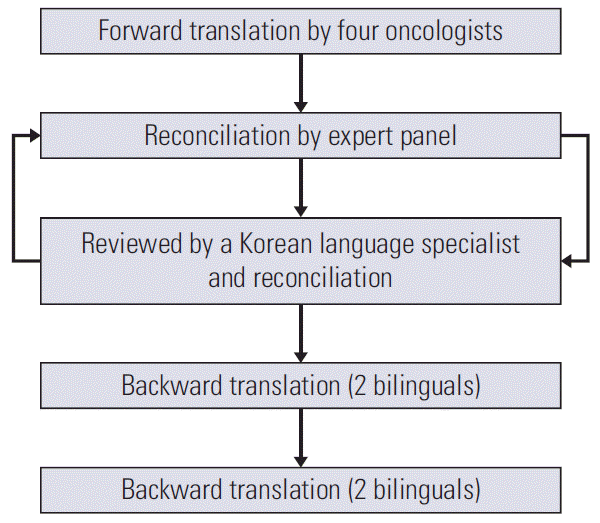2. Temel JS, Greer JA, Muzikansky A, Gallagher ER, Admane S, Jackson VA, et al. Early palliative care for patients with metastatic non-small-cell lung cancer. N Engl J Med. 2010; 363:733–42.

3. Ferrell BR, Temel JS, Temin S, Alesi ER, Balboni TA, Basch EM, et al. Integration of palliative care into standard oncology care: American Society of Clinical Oncology clinical practice guideline update. J Clin Oncol. 2017; 35:96–112.

4. Jordan K, Aapro M, Kaasa S, Ripamonti CI, Scotte F, Strasser F, et al. European Society for Medical Oncology (ESMO) position paper on supportive and palliative care. Ann Oncol. 2018; 29:36–43.

6. Ahmed N, Bestall JC, Ahmedzai SH, Payne SA, Clark D, Noble B. Systematic review of the problems and issues of accessing specialist palliative care by patients, carers and health and social care professionals. Palliat Med. 2004; 18:525–42.
7. Ahmed N, Bestall JC, Payne SA, Noble B, Ahmedzai SH. The use of cognitive interviewing methodology in the design and testing of a screening tool for supportive and palliative care needs. Support Care Cancer. 2009; 17:665–73.

8. Leppert W, Majkowicz M, Ahmedzai SH. The adaptation of the Sheffield Profile for Assessment and Referral for Care (SPARC) to the Polish clinical setting for needs assessment of advanced cancer patients. J Pain Symptom Manage. 2012; 44:916–22.

9. Bruera E, Kuehn N, Miller MJ, Selmser P, Macmillan K. The Edmonton Symptom Assessment System (ESAS): a simple method for the assessment of palliative care patients. J Palliat Care. 1991; 7:6–9.

10. Carvajal A, Centeno C, Watson R, Bruera E. A comprehensive study of psychometric properties of the Edmonton Symptom Assessment System (ESAS) in Spanish advanced cancer patients. Eur J Cancer. 2011; 47:1863–72.

11. Kwon JH, Nam SH, Koh S, Hong YS, Lee KH, Shin SW, et al. Validation of the Edmonton Symptom Assessment System in Korean patients with cancer. J Pain Symptom Manage. 2013; 46:947–56.

12. Cella DF, Tulsky DS, Gray G, Sarafian B, Linn E, Bonomi A, et al. The Functional Assessment of Cancer Therapy scale: development and validation of the general measure. J Clin Oncol. 1993; 11:570–9.

13. Lee EH, Chun M, Kang S, Lee HJ. Validation of the Functional Assessment of Cancer Therapy-General (FACT-G) scale for measuring the health-related quality of life in Korean women with breast cancer. Jpn J Clin Oncol. 2004; 34:393–9.

14. DeVellis RF. Scale development: theory and applications. Applied social research methods series, Vol. 26. Newbury Park, CA: Sage Publications;1991.
15. Ministry of Health and Welfare. Recommendations for distress management toward improvement of quality of life in cancer patients. Seoul: Ministry of Health and Welfare;2009.
16. Wilcock A, Hussain A, Maddocks M. Holistic needs of people with thoracic cancer identified by the Sheffield profile for assessment and referral to care questionnaire((c)). J Palliat Med. 2019; 22:1120–3.
17. Oh DY, Kim JE, Lee CH, Lim JS, Jung KH, Heo DS, et al. Discrepancies among patients, family members, and physicians in Korea in terms of values regarding the withholding of treatment from patients with terminal malignancies. Cancer. 2004; 100:1961–6.

18. Yun YH, Kwon YC, Lee MK, Lee WJ, Jung KH, Do YR, et al. Experiences and attitudes of patients with terminal cancer and their family caregivers toward the disclosure of terminal illness. J Clin Oncol. 2010; 28:1950–7.

19. Ahmadi F, Park J, Kim KM, Ahmadi N. Meaning-making coping among cancer patients in Sweden and South Korea: a comparative perspective. J Relig Health. 2017; 56:1794–811.





 PDF
PDF Citation
Citation Print
Print



 XML Download
XML Download